Will OKANA prompt clean-up east of Bricktown? Can OKC bring factory jobs? Your questions answered
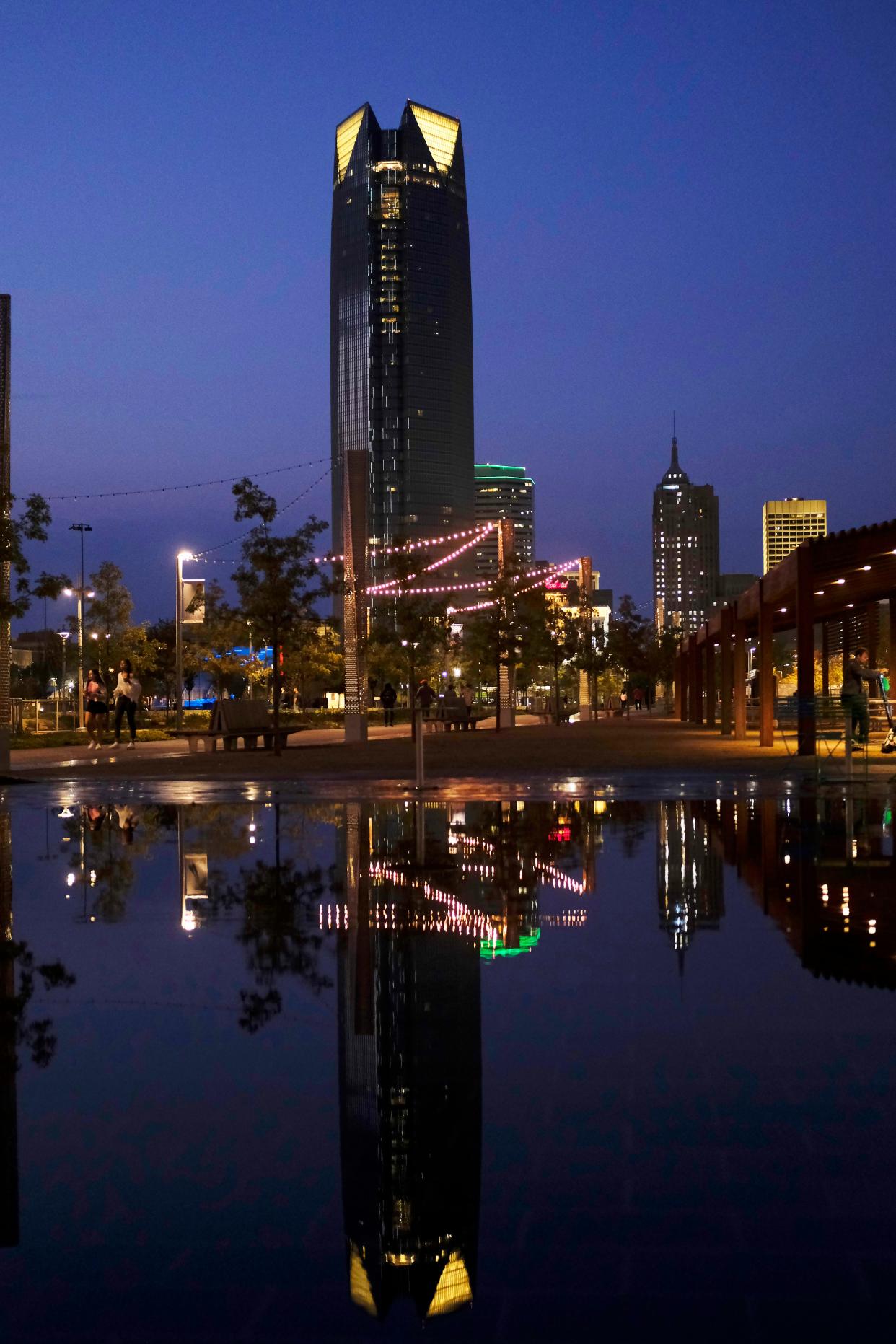
The Oklahoman’s Steve Lackmeyer fielded reader questions Friday during his weekly OKC Central Live Chat. You can join Steve most Fridays at 10 a.m. to add your comments and questions about downtown development.
To be able to ask questions and interact with Steve or special guests, you must have a digital subscription to The Oklahoman and you must be logged in. Right now, you can get unlimited digital access to all of our content for $1 for three months.
Below is an edited transcript of Friday’s discussion:
Why do Classen Boulevard and Western Avenue merge at Oklahoma City Boulevard?
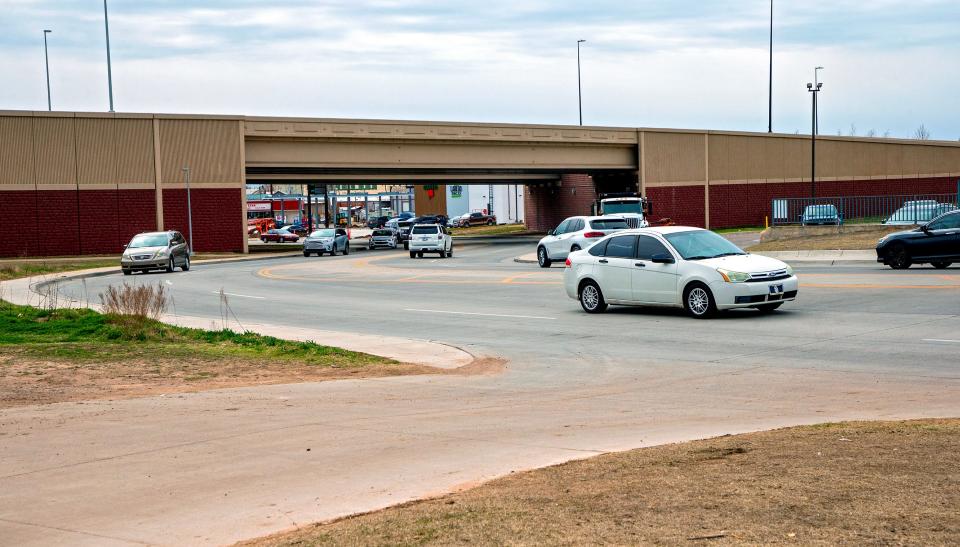
Q: Good morning, Steve. I've looked at some older maps before Western and Classen were combined around Reno. What was the original purpose for this, and has that purpose been met?
A: Western Avenue and Classen Boulevard have long competed as arterial corridors between the Oklahoma River and NW 23.
The problem dates back to the 1950s when Classen Boulevard was extended to Main Street. That extension left us with two streets crisscrossing each other NW 18 and NW 13, with Western Avenue being a two-lane stretch between I-44 and NW 23, then converting to one-way traffic between NW 18 and NW 13, then crossing Classen Boulevard and resuming as a two-lane street through Reno Avenue where it then historically resumed as a major four-lane street.
Confusing, right?
Classen, meanwhile, was extended to the south of Reno Avenue but where it dead-ended before hitting I-40. Classen and Western, along with Reno, created a situation for engineers where they originally proposed rebuilding Oklahoma City Boulevard as an elevated freeway to get over these streets. This didn't go over well with area property owners and planners who saw it as creating another barrier to redeveloping the area between the Oklahoma River and downtown.
By merging Classen and Western at the boulevard, engineers were able to just have a bridge instead of an elevated bypass.
What impact will the resort have on Reno Avenue east of Bricktown?
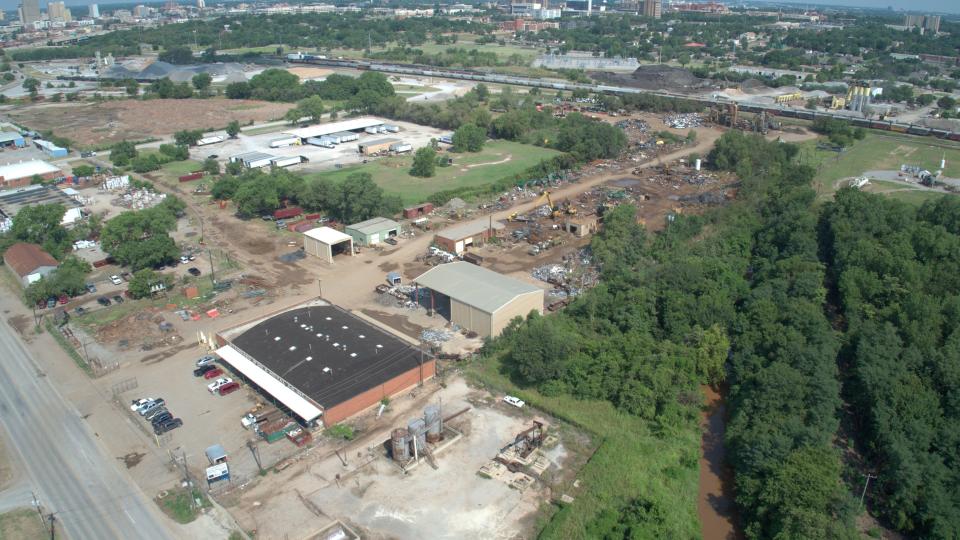
Q: When OKANA opens up, what does that mean for the surrounding area businesses on Reno?
A: I think the Chickasaws will take an interest in nearby properties, but how and when is beyond the capability of my Magic 8 ball. Targeted redevelopment, ideally, could include the old gas station converted into a marijuana dispensary with the tall dilapidated sign, the older motels just west of the Greyhound station, and ideally, relocation or closing of the two remaining scrapyards.
I can see an OnCue or even a QuikTrip being built at I-40 and Eastern.
Can Reno Avenue between Bricktown and OKANA resort be cleaned up by the city?
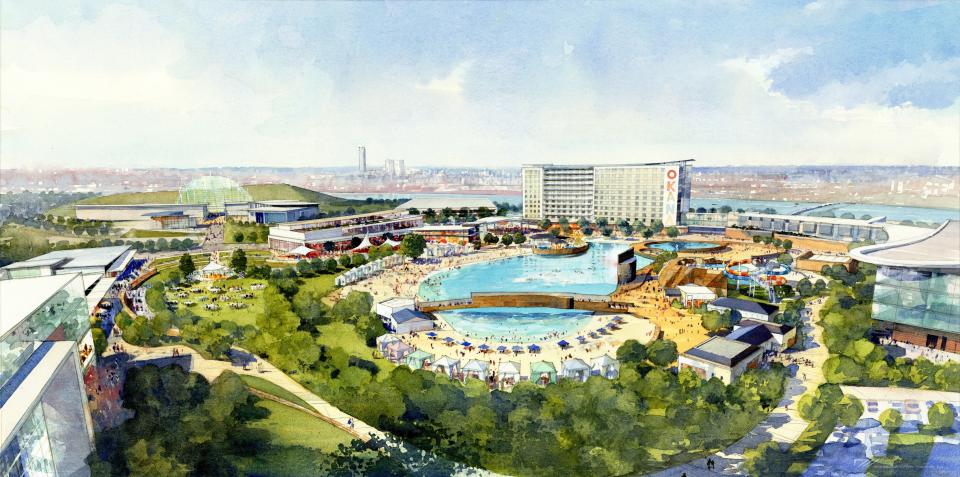
Q: When OKANA opens up, what happens to all the businesses on E Reno? Will some be forced out to make room for more hotels and restaurants?
A: Reno Avenue between Bricktown and Eastern Avenue, where OKANA is being built, is an urban planner's nightmare created by a history of zoning indifference by the city and a lack of leadership and vision for what needs to be done on the corridor.
New budget hotels and storage units on the west end of this corridor? Check. Nosy, unsightly scrapyards on the middle section with metal warehouses and RV sales across the street? Check.
Older hotels and truck stops on the east end of this corridor? Check. An old gas station converted into a marijuana dispensary with a tall dilapidated sign visible to all passing motors? Check. A Waffle House? Heck yeah, check? Two major truck stops and a Greyhound bus station? Yep, got that too. What a wonderful mix to have between the state's most popular urban entertainment district and a $400 million resort. So, what can be done?
Commission the OU Institute for Quality Communities to come up with a game plan for improving the area. Don't just rely on an outside consultant to come up with a way to best use MAPS 4 beautification funds for the corridor. Figure out how to minimize or eliminate scrapyard operations in the area. Draw up a design district.
Will four proposed towers in Lower Bricktown really get built?
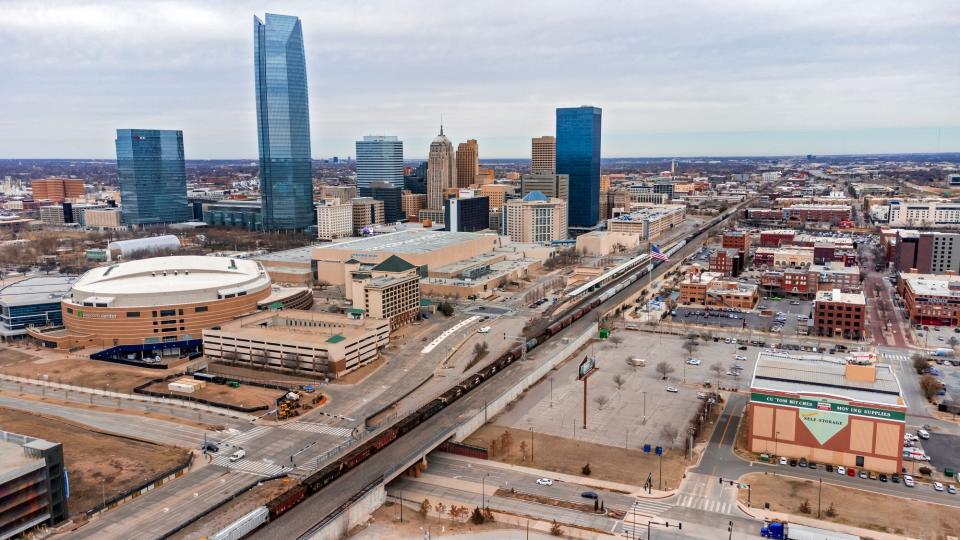
Q: Is the Dream hotel high rises project (in Lower Bricktown) a real deal or just another project that falls through?
A: Four towers about 24, 25 stories each. A large request for tax increment financing. An unproven model for upscale, costly high-rise apartments. Assurances that this is a real deal. Forgive me if this all sounds familiar. ...
Will the Strawberry Fields proposal become a reality?
Q: I know this has been covered ad nauseam, but what is the likely future for Strawberry Fields, in your opinion? Any chance out-of-state developers would come in and take a chunk of the development a few years down the line?
A: Eight years have passed since Pat Salame began buying up blighted properties west of Scissortail Park. With the exception of several historic or notable buildings, she has cleared the land and prevented them from becoming illegal dumping grounds.
A small minority of investors in the project are suing over what they say is a lack of communication by Salame - an allegation disputed by Salame and her largest investor, Richard Anderson.
I'm not sure that lawsuit will go anywhere. But we are awaiting whether the city council will approve tax increment financing to replace aging infrastructure in the area. She clearly has been able to get the money needed to do what's been done to date. But I do believe other developers will be brought in to get the job done.
Will bus rapid transit boost streetcar ridership?
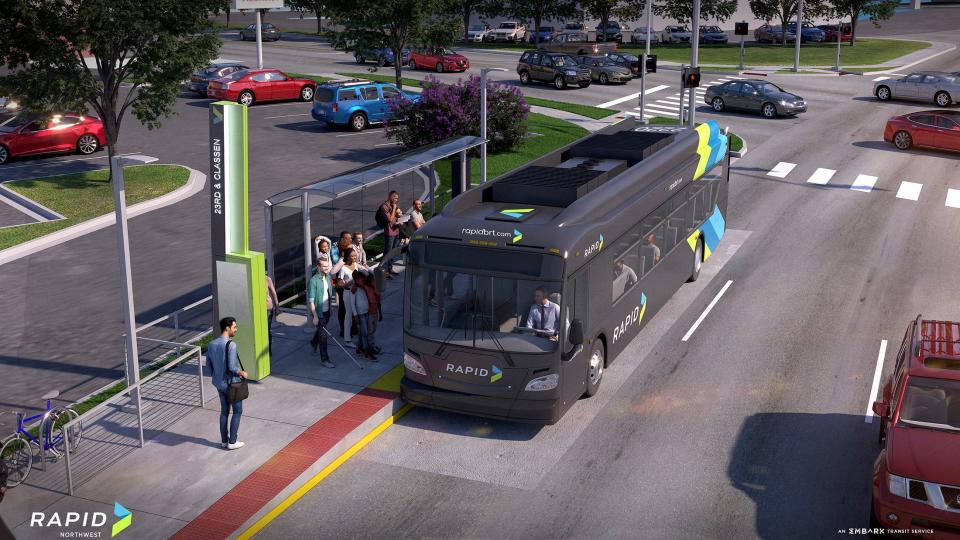
Q: I took the company out on the streetcar for lunch this week. It was cold and rainy and allowed us to grab a great bite at Cafe do Brasil without driving. Do you think the bus rapid transit will significantly affect ridership and justify it in the long run?
A: The bus rapid transit lines, I think, will provide a great boost to public transit in Oklahoma City by providing a relatively fast-moving, efficient route between downtown and far northwest Oklahoma City.
Before the streetcar routes were finalized, I questioned the early effort by consultants to design it as a loop around downtown instead of as linear (like an elevator) up and down the street trips like the highly popular system in Kansas City.
After launching a rubber tire trolley in the 1990s that failed by trying to serve everybody and ultimately serving nobody, the city basically repeated that choice with the streetcar loops.
Can BRT boost ridership on the streetcars? Maybe. I suspect a planned regional transit system that will ultimately be submitted to voters could, if approved, provide the connections needed for the loop to finally make sense by turning it into the heart of a hub and spoke system.
Can Oklahoma City bring back manufacturing jobs?
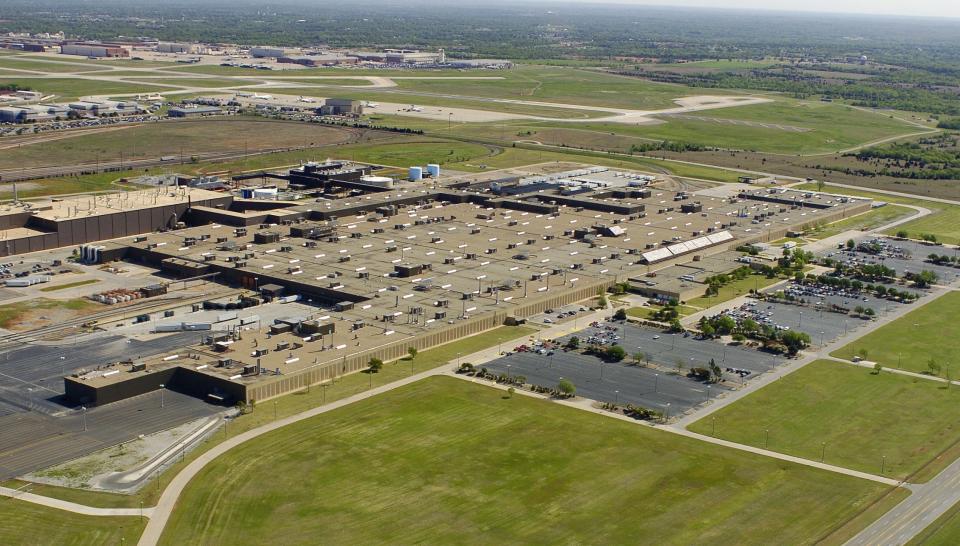
Q: I just saw statistics that manufacturing in Oklahoma has dropped to less than 10% of our workforce. We need large tracts of land to lure those types of companies back. Where should/could they go? ($10 if you say Crossroads).
A: Oklahoma City lost a big chunk of its manufacturing base in the late 1990s and early 2000s when we saw a wave of closures that included the former Western Electric plant, Dayton Tires and General Motors. All three represented hard fought for wins by the Greater Oklahoma City Chamber between the 1950s and 1970s.
Fortunately, Oklahoma City still had Tinker Air Force Base, oil and gas, bio-tech and aerospace prevent the sort of economic hit that wiped out the city’s economy during the 1980s oil bust. Tourism also played an increasingly important role in our city. Oklahoma County voters approved a bond issue that assisted in converting the former GM plant into a maintenance hub addition at neighboring Tinker Air Force Base.
Manufacturing is finally returning to the United States. Our country has realized, painfully, that depending on other countries, especially adversaries like China, for pharmaceuticals and computer chips leaves us vulnerable to shortages and worse.
Two recent developments come to mind as opportunities for Oklahoma City to reposition itself as a home to this onshoring effort.
First, you’re not alone in thinking the city needs more industrial land and that need is being addressed with OKC 577, a sprawling master planned industrial park at Bryant Avenue and Interstate 240 with nearby access to Interstate 35 and a BNSF Railway hub. The master plan created by partners Dick Tanenbaum and Mark Beffort allows for about 7 million square feet of industrial space with large sites that locally have been in scarce supply.
The $1 billion master plan includes amenities not typically found at industrial hubs, including sidewalks and walking trails, a food truck court and a small park. Construction is underway on the first phase, which will include a new headquarters for Locke Supply.
We are still waiting and watching ongoing efforts by Canoo to open an electric vehicle assembly plant. If it succeeds, Oklahoma City will at least be in the game for what appears to be the future of manufacturing in the United States.
This article originally appeared on Oklahoman: OKC manufacturing jobs, cleaning up near OKANA: Your questions answered

